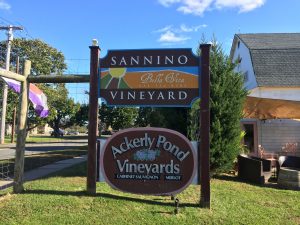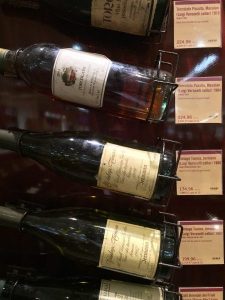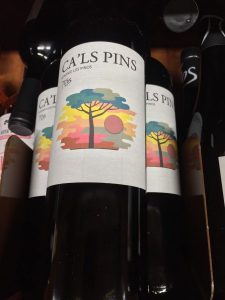For this assignment, I chose to go to Sannino Vineyard in Long Island, New York with Ellies, and Mei. We booked a tour at 12 p.m. Bill Kovacsik who was our tour guide was greeting with a smile and started the tour with a glass of chilly chardonnay. Because of the cold weather, we spent most of our tour in a tasting room. Bill was a former professor at New York University in Singapore. He started the tour with the basic knowledge of wine in general. Deciding on the type of grape to grow is the first step in vinicultural practices. Sannino located in The North Fork of Long Island American Viticultural Area (AVA). Terroir is a site or land in French which play a very important role in this decision making. In Long Island, especially North Fork where the Sannino Vineyard is located, the soli in this appellation is drainage and silt (lisustainablewine.org). Another factor to consider is climate. Long Island is a maritime climate where both Long Island Sound and the Atlantic Ocean cool off the narrow peninsula (lisustainablewine.org). As we all learn in class, water helps to moderate the temperature which is an impact on the quality and the ripeness of grape. Bill mentioned that one of the challenges that vineyards in Long Island have is humidity. Humidity causes mold and mildew. After knowing what type of the climate and soil in Long Island are, then decided to choose the right grape varieties is made. Merlot, Chardonnay, Cabernet Sauvignon are the leading grape varieties in the region (newyorkwines.org).
Moving on to the next step, Vineyard Pruning. Pruning will manipulate the potential of grape produced. Bill told us that the grape vine’s root is about 20 feet deep in the ground. The bud break is the consequent of the pruning system. Just a tip that Bill told us during the tour, how to differentiate American bud and European bud is that American bud is hairy. The last step the Bill mentioned is a harvest. The facts that vineyard manager needs to contemplate are brick level, ripeness of the seed, concentrated berries, alcohol is half of the sugar level, acidity, and tannin. At the Sannino, they offered both oak barrel and tank fermentation. Their oak barrels are from France, America, and Hungary. France oak is thinner than American oak and for the Hungarian oak, Bill said it is cheaper and have a spicy flavor. Red wine from Sannino is fermented in an oak barrel while white and rose are fermented in tank. They age their wine in oak for 22 months for the aroma and flavor. Another fact Bill told us was 80 percent of women are buying wine. The tour also included wine tasting. One of the reasons we chose this tour because of the varieties of wine tasting choices that Sannino offered. Other places only offered either sparkling wine only or red and white wines. The first wine we were tasting was the chilly chardonnay at the beginning of the tour. It was very well balanced with a refreshing touch, perfect for starting the tour. Second wine if I remember correctly was rosé. The next one was an oaky Syrah and following with Cabernet Franc. The last one was unique. It called Spiced Wine which infused with cinnamon, nutmeg, and clove. The wine was served warm.
Resources:
Our soils. (2018, November 21). Retrieved from http://www.lisustainablewine.org/our-soil/
Discover the Long Island Region. (2018, November 21). Retrieved from https://www.newyorkwines.org/wine-regions/long-island
Our climate. (2018, November 21). Retrieved from http://www.lisustainablewine.org/our-climate
Beautiful grape vines (Cabernet Sauvignon)








